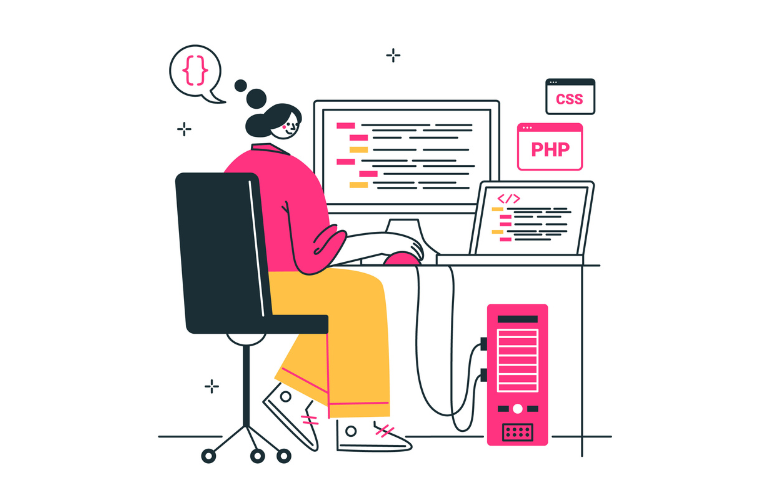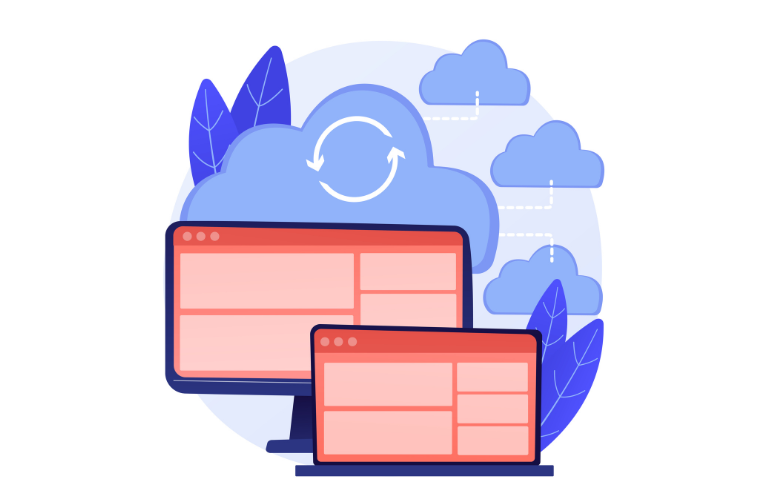Edge Computing and PHP are revolutionizing the way developers build web applications, delivering lightning-fast, responsive experiences by processing data closer to users. If you’re a PHP developer frustrated by slow load times, limited scalability, or unreliable offline functionality, this dynamic duo offers a game-changing solution.
This article explores how Edge Computing and PHP work together to boost performance, shares practical use cases, and provides simple implementation steps to help you create next-generation web apps. Let’s dive into the future of faster, smarter, and more efficient applications!
Table of Contents
What Is Edge Computing and Why Pair It with PHP?
Edge computing flips the traditional model by processing data near its source—think devices, sensors, or local servers—rather than sending it all to a central cloud. This cuts delays, reduces bandwidth use, and enhances real-time responses. For PHP developers, Edge Computing and PHP combine the language’s versatility with edge benefits to tackle common pain points like sluggish performance.
Here’s why this pairing shines:
- Speed Boost: Data processing at the edge means instant updates for users, no matter their location.
- Scalability Made Easy: Distribute workloads across edge nodes to handle growing demand smoothly.
- Offline Power: Cache data locally for seamless app use, even without internet.
PHP, a proven web development staple, thrives in this setup, empowering you to build responsive, scalable applications that users love.
Benefits of Edge Computing and PHP for Web Apps
Pairing Edge Computing and PHP unlocks a host of advantages for developers and users alike. By bringing computation closer to the data source, you can transform your web apps into high-performance tools. Consider these key benefits:
- Reduced Latency: Shorter data travel distances mean faster load times—think interactive maps updating in a blink.
- Effortless Scaling: Edge nodes distribute tasks, ensuring your app handles traffic spikes with ease.
- Offline Functionality: Local caching lets users engage with your app, even during network outages.
- Resource Efficiency: Process only what’s needed locally, saving bandwidth and cloud costs.
This combo empowers PHP developers to create smoother e-commerce platforms, real-time analytics tools, and more, solving the pain of slow, unreliable apps.
Top PHP Frameworks for Edge Computing
Choosing the right framework is key to leveraging Edge Computing and PHP effectively. These tools optimize code, performance, and scalability for edge environments. Here are the best picks:
Slim
Slim’s lightweight, minimalist design makes it a star for edge computing.
- Its lean code reduces resource use, perfect for constrained edge devices.
- As a microframework, it focuses on routing and essentials for swift responses.
- Flexible customization suits diverse edge use cases, from IoT to real-time apps.
Fat-Free Framework (F3)
F3 blends power and efficiency for Edge Computing and PHP projects.
- Feature-rich with routing, caching, and database access for robust apps.
- MVC architecture keeps code organized and maintainable at the edge.
- Built-in security, like CSRF protection, safeguards edge deployments.
Flight
Flight, a microframework, excels in simplicity and speed.
- Its minimalist core keeps the codebase small for fast edge performance.
- Plug-and-play components let you add templating or database tools as needed.
- Ideal for quick, focused edge apps with minimal resource demands.
These frameworks lay a solid foundation for building responsive, edge-optimized web applications with PHP.
Best PHP Libraries for Edge Computing
Libraries enhance your Edge Computing and PHP projects by adding key functionalities. These tools streamline data handling, communication, and more in edge setups.
PHP-DI
This dependency injection library boosts maintainability.
- Manages dependencies for loosely coupled, testable code.
- Optimizes resources by injecting only what your app needs at the edge.
- Enables modular design for easy updates in dynamic edge environments.
Guzzle
Guzzle powers efficient HTTP communication.
- Handles GET, POST, and other requests for seamless edge data exchange.
- Asynchronous operations keep your app responsive with non-blocking I/O.
- Modular features like caching optimize resource use on edge devices.
PHP Excel
Perfect for data-driven edge apps, PHP Excel processes spreadsheets locally.
- Reads and writes XLSX, CSV, and ODS for flexible data handling.
- Lightweight design minimizes resource use on edge nodes.
- Ideal for analyzing sensor data or generating reports at the edge.
These libraries make Edge Computing and PHP a powerful combo for responsive, data-savvy applications.
Common Use Cases of Edge Computing and PHP
The fusion of Edge Computing and PHP opens exciting possibilities for web apps. Here are practical use cases to inspire your projects:
Pre-processing and Filtering Data
- Process sensor or user data locally to cut latency and network traffic. For example, filter IoT sensor readings in real-time for instant insights, using PHP-DI for efficient resource management.
Lightweight Microservices
- Break apps into small, independent PHP microservices deployed on edge nodes. Use them for tasks like authentication or caching, boosting scalability and fault tolerance.
Serverless Edge Functions
- Run event-triggered PHP functions on edge devices via platforms like AWS Lambda at the Edge. Trigger real-time actions, like data processing, without managing servers.
Content Delivery and Caching
- Cache static content on edge nodes with PHP for faster delivery. Pair with CDNs to serve users globally, minimizing load times and enhancing experiences.
Offline Functionality
- Enable offline use by caching data locally with PHP. Build progressive web apps (PWAs) that sync when connected, keeping users engaged during outages.
Real-time Data Processing
- Analyze streams like sensor readings on edge devices with PHP. Use for fraud detection or predictive maintenance, leveraging lightweight microservices for efficiency.
These use cases show how Edge Computing and PHP solve real-world challenges for responsive, scalable apps.
Simple Implementation: Building a PHP Edge App
Ready to harness Edge Computing and PHP? Here’s a simple example to create a basic edge app that processes user data locally and caches results for speed. This tracks real-time user clicks on a web page, processes them at the edge, and stores results locally.
<?php
// Include Guzzle for HTTP requests and PHP-DI for dependency management
require 'vendor/autoload.php';
use DI\Container;
use GuzzleHttp\Client;
// Set up dependency injection container
$container = new Container();
$container->set('client', function() {
return new Client(['base_uri' => 'http://edge-node.local/']);
});
// Simulate edge node setup: cache directory for local storage
$cacheDir = __DIR__ . '/edge_cache';
if (!file_exists($cacheDir)) {
mkdir($cacheDir, 0777, true);
}
// Function to process and cache click data locally
function processClickData($client, $cacheDir, $userId, $clickTime) {
$data = [
'user_id' => $userId,
'click_time' => $clickTime,
'processed_at' => date('Y-m-d H:i:s')
];
// Cache data locally in a file
$cacheFile = "$cacheDir/click_$userId.json";
file_put_contents($cacheFile, json_encode($data));
// Simulate sending summary to central server (edge to cloud)
try {
$response = $client->post('api/summary', [
'json' => ['user_id' => $userId, 'click_count' => 1]
]);
echo "Edge processed and sent: " . $response->getBody() . "\n";
} catch (Exception $e) {
echo "Error sending to cloud: " . $e->getMessage() . "\n";
}
return $data;
}
// Simulate user click (e.g., from a web button)
$userId = 'user123';
$clickTime = date('Y-m-d H:i:s');
$client = $container->get('client');
$result = processClickData($client, $cacheDir, $userId, $clickTime);
// Output result for testing
echo "Processed at edge: " . print_r($result, true) . "\n";
// Read from cache for offline use
$cachedData = file_get_contents("$cacheDir/click_$userId.json");
echo "Cached data: " . $cachedData . "\n";
?>Steps to Implement:
- Install dependencies: Use Composer to add Guzzle (composer require guzzlehttp/guzzle) and PHP-DI (composer require php-di/php-di).
- Set up an edge node: Simulate a local server (e.g., XAMPP or a Docker container) as your edge device.
- Run the script: Process click data locally, cache it, and send summaries to a central server.
- Test offline: Check cached data in the edge_cache folder for offline access.
This basic app shows how Edge Computing and PHP reduce latency and enable offline use. Adjust the logic for your needs—e.g., sensor data or e-commerce transactions.
Shortcuts for Time-Saving with Edge Computing and PHP
Time is money, and Edge Computing and PHP offer shortcuts to speed up development and performance. Try these:
- Use Slim Framework: Its lightweight design cuts setup time for edge apps—install via composer require slim/slim.
- Leverage Guzzle Async: Send non-blocking HTTP requests to process data faster—e.g., $client->getAsync(‘api/data’).
- Cache with PHP: Store frequent data locally using file_put_contents() to skip redundant cloud trips.
- Pre-built Templates: Use Flight’s plug-and-play components to quickly add features like templating.
- Automate with Composer: Run composer install to grab libraries like PHP-DI and Guzzle in one go.
These tricks streamline your workflow, letting you deploy Edge Computing and PHP apps faster.
How to Future-Proof Your PHP Edge Apps
The digital world evolves fast, and Edge Computing and PHP can keep your apps ahead. Follow these strategies:
Scale Smartly
- Build with modularity using microservices or serverless PHP functions. This lets your app adapt to traffic spikes or new tech.
Stick to Standards
- Use open-source PHP libraries and design APIs for edge platforms. This ensures community support and easy integration.
Secure Everything
- Apply PHP best practices—encrypt data, use access controls, and scan for vulnerabilities to protect edge nodes.
Enable Offline Use
- Cache data with PHP for offline access. Build PWAs to sync when connected, keeping users engaged.
Monitor and Adapt
- Track edge performance with tools like New Relic (newrelic.com) and tweak features based on user trends.
Future-proofing with Edge Computing and PHP keeps your apps fast, resilient, and ready for tomorrow.
Getting Started with Edge Computing and PHP
Ready to boost your web apps? Start small:
- Learn Basics: Explore edge concepts at Edge Computing 101 (edgecomputing101.com).
- Pick a Framework: Try Slim or Flight for lightweight edge apps—install via Composer.
- Test Locally: Simulate an edge node with a local server and run the sample code above.
- Seek Help: Partner with a PHP development agency for expert setup and optimization.
Edge Computing and PHP empower you to solve slow performance, scale effortlessly, and delight users. Experiment with use cases, frameworks, and libraries to unlock a faster, smarter future for your web applications!
FAQs
1. What is Edge Computing and PHP, and how do they work together?
Edge Computing and PHP combine to bring faster, more responsive web apps. Edge computing processes data close to users—on devices or local servers—cutting delays. PHP, a popular web development language, pairs with it to handle data, power apps, and enable real-time features like instant updates or offline access.
2. Why should I use Edge Computing and PHP for my web app?
Using Edge Computing and PHP boosts your app’s speed by processing data locally, improves scalability to handle more users, and supports offline functionality. This means quicker load times, smoother experiences, and happier users, even with spotty internet.
3. Which PHP frameworks are best for edge computing?
Top PHP frameworks for Edge Computing and PHP include:
- Slim: Lightweight and fast, perfect for resource-limited edge devices.
- Fat-Free Framework (F3): Feature-rich with caching and security for robust apps.
- Flight: Simple and speedy, ideal for quick, small edge projects.
4. How does Edge Computing and PHP improve web app performance?
Edge Computing and PHP reduce latency by processing data near users, not distant servers. This cuts load times for things like maps or e-commerce checkouts. PHP handles the logic, while edge nodes save bandwidth and speed up responses for a seamless experience.
5. Can Edge Computing and PHP work offline?
Yes! Edge Computing and PHP enable offline functionality by caching data locally on edge devices. PHP can store key info, so your app works during network outages, keeping users engaged until the connection returns.
6. What are common use cases for Edge Computing and PHP?
Common uses include:
- Real-time analytics for sensor data (e.g., IoT).
- Caching content for faster delivery.
- Offline features for progressive web apps.
- Microservices for scalable tasks like authentication.
Edge Computing and PHP make apps fast and reliable!
7. How do I get started with Edge Computing and PHP?
Start small:
- Learn edge basics at sites like Edge Computing 101 (edgecomputing101.com).
- Pick a framework like Slim—install via composer require slim/slim.
- Test locally with a server (e.g., XAMPP) and simple PHP code.
- Consider a PHP development agency for expert help with Edge Computing and PHP.




